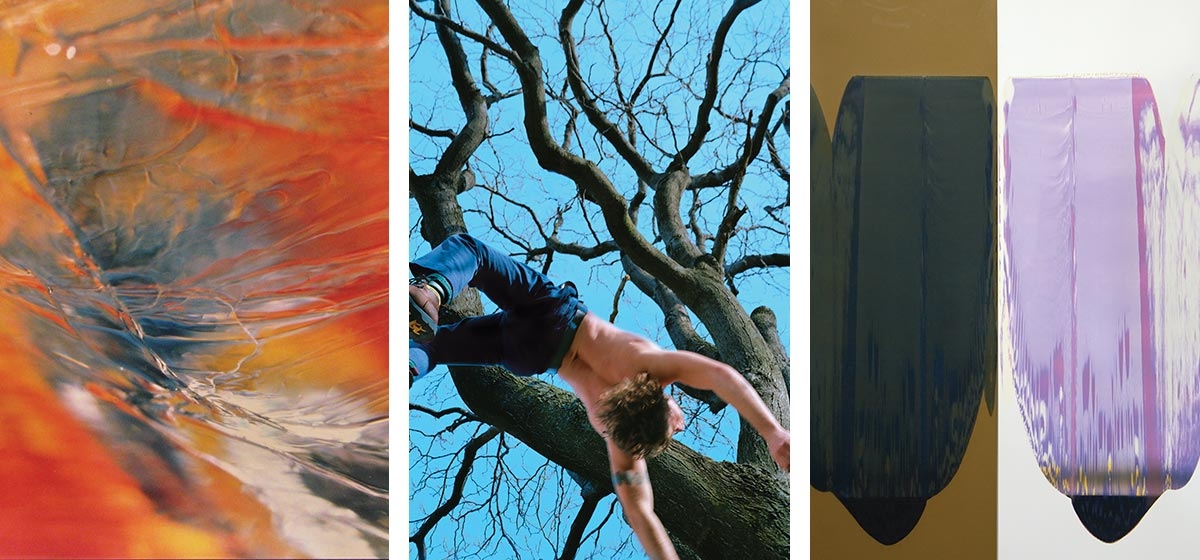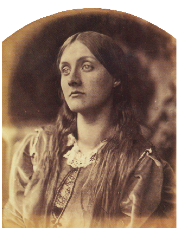
You would never have thought it. That an ordinary medium, which simply traps the light that falls onto a surface and somehow saves it could be so powerful. You could rank it with the invention of the printing press. Nearly 200 years later, my little point-and-shoot may surprise you, as you have been surprised by the mastery of Robert Mapplethorpe or Henri Cartier-Bresson.

Andy Warhol sometimes never pressed the shutter, sending his sitters down the street to a photobooth. And others, mere street artists, might simply steal another’s photograph of a black man and turn it into an image capable of winning the presidency.
Pittsburgh makes no claim to the vanguard of historic photography. A birth, a marriage or a death called for a simple documentary tintype; perhaps a bridge or steam locomotive as an enlarged salt print might celebrate some new event. Yet here, from 1840, as in most American and European cities, photography studios opened exponentially, though no local equivalent of Mathew Brady, Gustave Le Gray or Julia Margaret Cameron was to emerge.
In 1885, the first local association of photographers, The Pittsburgh Amateur Photographers’ Society, gathered. By 1898, it held an International Salon in the Carnegie Institute (grand prize given to the internationally distinguished Clarence H. White and the local amateur James L. Nix). In 1900, the society was incorporated in the Pittsburgh Academy of Arts and Sciences as the Photographic Section of The Academy of Science and Art of Pittsburgh. It still exists today.
The style of the day was pictorial, claiming the same rights and prestige as painting itself, and it is important to note that the 1898 work was shown in the same galleries as the Carnegie International. Six years later, this was to be confirmed, again at The Carnegie, when the most important photographic association in the country, the Photo-Secession, arranged an exhibition of American pictorial photographs, “under the auspices of the Camera Club of Pittsburgh.” One photograph, again by White, was a portrait of John W. Beatty and his sister. Beatty was first director of The Carnegie, a painter, etcher and, importantly, a photographer who must have oiled the wheels for the new medium.
More important still, this exhibition included work by giants of the medium Gertrude Kasebier, Alvin Langdon Coburn, Edward Steichen and Alfred Stieglitz. Steichen and Stieglitz would nursemaid the medium through change for the next 50 years. The illustrated catalog to that show is a great rarity of photographic incunabula. At that moment in time, 1904, Pittsburgh could lay claim to being absolutely au fait in the field of contemporary photography.
Two years ago, Linda Benedict-Jones, then director of the Silver Eye Center for Photography on the South Side, became the first curator of photography at The Carnegie Museum of Art. (New departments of photography are cropping up all over the place: the Tate Modern in London, the De Young Museum in San Francisco.) Previously, photographs either were regarded as works on paper, not to be distinguished from prints or drawings, or, if modern, falling under the care of the contemporary art department, which also looks after the holdings of the recently defunct department of film and video. In a way, photographs had lost their 1904 status and some revaluation was necessary.
Benedict-Jones found she had some 4,500 photographs in the collection. Her first exhibition at The Carnegie as curator (ignoring the trailblazing historical survey, “Pittsburgh Revealed,” that she was involved with in 1997) took a look at those holdings from a historical point of view, but also incorporated contemporary photographs by local and international artists not already in the collection. That show, “From Digital to Daguerreotype: Photographs of People, 2009,” was by no means large or encyclopedic; it was best read as a manifesto, which in conjunction with “Pittsburgh Revealed,” suggested the program for the new department.
“There are too many photographs out there,” I remember Benedict-Jones lamenting (rather like a lepidopterist complaining that there were too many butterflies in the world). Too many to be sure, and the categories of photography are endless and increasing. If every museum on Pittsburgh (count well over a dozen: in sciences, natural history, art, history…) had a curator of photography, none of the collections would remotely resemble each other.
Lewis Hine’s early photographs of child labor, Alvin Langdon Coburn’s 1910 images of a smoky Pittsburgh, W. Eugene Smith’s striking views of the steel mills, Luke Swank’s elegant essays in modernism, and Charles “Teenie” Harris’s documentation of life in the Hill District could give the impression that the history of photography has been articulated though the work of a few remarkable individuals and overall following the conventional track from pictorialism to modernism. The truth is more complex.
Amateurs, regular photojournalists and commercial photographers add immeasurably to the picture. Anonymous work—which turns up in estate sales, auctions and albums in book shops, on eBay and in dumpsters—points even more surely to the democratic nature of photography. Some of it is clutter, however valuable. The editorial task of the curator is weighty. But she is doomed to accumulate. And in the Museum of Art, Benedict-Jones has an interesting additional challenge. Her department is media-based, and the interests of other curatorial departments overlap with hers in that respect. Decorative arts departments have some concern with the photographic, but above all, The Carnegie’s Contemporary Art Department also surveys and collects photography, with an independent course.
“There are too many photographs out there”
– Linda Benedict-Jones
Contemporary Art Department curator Dan Byers sees photography as most useful “for its absolutely intrinsic relationship to the way we see in the 20th/21st centuries. So that the photographic eye, or even the idea of the photogenic, has had a profound impact on the way artists construct images or experiences (whether in painting, sculpture, installation, or film) and the way audiences look at artworks.” Photography here is open-ended, no-holds-barred and out to surprise. In contemporary art, the medium is a tool to that end.
Perhaps the best way to see how the balance between these two departments works is in their current exhibitions. Benedict-Jones is currently showing (until Feb. 13) “On Reading,” work by André Kertész, the influential Austro-Hungarian-American (1894–1985). Byers has curated a complex show, “Ordinary Madness,” drawing on works in the museum’s collection, but including photographs by Larry Clark, Catherine Opie and photo-collages by John Bock (until Jan. 9).
Byers’ point could scarcely be made more forcefully by looking at the other great art museum under the wing of The Carnegie. The Andy Warhol Museum is essentially underpinned by photography and its uses. The exhibition “Marilyn,” on display until Jan. 2, presents images of Marilyn Monroe, filched or “appropriated” by Warhol, and augmented by the work of more than 80 artists, including photographers Richard Avedon, Henri Cartier-Bresson and Bert Stern.
Helen Clay Frick might not have approved, but her museum in Point Breeze has been surprisingly pro-active, commissioning photo essays by local and international photographers. Pittsburgher Aaronel de Roy Gruber and Brazilian Vik Muniz were both invited to produce photographic responses to the environment and collections of Clayton, Frick’s local residence. So also the important modernist Margaret Bourke-White and the great Victorian amateur Julia Margaret Cameron reveal a developing concern with the medium at the Frick. “ ‘For my best beloved Sister Mia’: An Album of Photographs by Julia Margaret Cameron,” is at The Frick until Jan. 2.
Silver Eye Center for Photography is entirely devoted to still photography and claims to be the only institution of its kind in the region. It puts on four major exhibitions a year and four smaller shows devoted to work by its broad membership. Small as its space on the South Side may be, it is highly influential and nationally regarded. Its most recent show, organized by its new director, Ellen Fleurov, is “Spectra: New Abstract Photography.” Five artists explore abstraction from different points of view, making claims for photography as radical as the claims made by pictorialists 100 years earlier.
Ellen Carey, an artist in the show, was represented by work in recent Silver Eye Benefit Auctions, which are an important means of reaching into and fostering the collecting community.
These auctions, which have funded the center since its inception, give beginning and proficient collectors a chance to acquire key works by local, national and international artists for competitive prices. This year, the purchases included work by Edward Steichen, Mark Perrott, Duane Michals, Dylan Vitone, W. Eugene Smith, Charles “Teenie” Harris, George Tice, Clarence H. White, and Seth Dickerman. Each successive auction becomes more competitive and exciting, in much the same way as public auctions in London and New York have captured the public imagination. Steichen’s “The Pond-Moonlight, 1904” still holds the world record price for a photograph at $2.9 million (Sotheby’s, New York, 2007).
Pittsburgh Filmmakers, a media arts center in North Oakland that offers facilities for both film and still photography, has a gallery, largely devoted to showing the work of its staff and membership. “Kerry Skarbakka: Anxiety and Redemption” runs through Dec. 5. Skarbakka’s imagery of himself falling, out of control, from high buildings and unstable places is a metaphor for his personal experience with universal implications. If all photography, to quote Walter Benjamin, involves something of a “shock,” then Skarbakka makes the point with extra force.
Skarbakka teaches at Filmmakers. In fact, most photographers in Pittsburgh teach, and Filmmakers, Carnegie Mellon University, the University of Pittsburgh, Robert Morris University, the Art Institute of Pittsburgh, Manchester Craftsman’s Guild, and the Pittsburgh Center for the Arts provide extensive programs at different levels. Silver Eye and Filmmakers offer portfolio reviews as a matter of course. Many photographers also collect photographs, and the result is a noticeably collegial community.
All of the above is the stuff of the public life of photography, put together in the public eye, and for the benefit and education of the public. Corporate collections are assembled more discreetly, through dealers and with the quiet advice of museum and other professionals. Pittsburgh has few dealers who specialize in photography.
I know of only one private dealer solely dedicated to it. For the most part, local dealers have occasional exhibitions of work by living artists and, less frequently, shows of work by local and other artists who have entered the collecting canon. The late Clyde Hare, who died in 2009 at 82, was an important link with the glory days of industrial Pittsburgh. He was brought here by the legendary editor Roy Stryker, “the father of documentary photography in America,” to work on the Pittsburgh Photographic Project in 1950. For nearly 60 years, he produced work that continued the documentary tradition of W. Eugene Smith, but which also revealed a changing sensitivity to his subject material. His later use of color has absorbed the lessons of abstraction. “Ice #314, 1998,” evokes the later abstractions of the Pittsburgh painter Sam Rosenberg. Concept Art Gallery held a memorial exhibition earlier this year.
The private Duquesne Club, best known for its local paintings, has also started to collect local photographic images, accessible to the public on application.
The well-known law firm, ReedSmith LLC, on moving to new modern space downtown, has started to build a collection of local photographic work, including the series “Edible Pittsburgh, 1982” by Duane Michals (the entire body of whose work is destined for the Carnegie Museum of Art).
And BNYMellon’s broad-based collection of art, spread over its offices internationally as well as in New York and Pittsburgh, includes important examples of contemporary photography. Work by Wolfgang Tillmans, the German photographer who figured in the last Carnegie International, is both in BNYMellon’s and the museum’s collection. Brian Lang, curator of BNYMellon’s art collection, also sits on the board of Silver Eye and brings his special knowledge of contemporary international photography to the local community.
But it is through the daily newspapers and regular journals produced in the city that the art of photography makes its most persistent incursion into the lives of ordinary people. News, documentation, sport, fashion and even art itself depend on the photographic medium. It is both new and challenging and old and reassuring. And it is fully represented in the city and its region.





